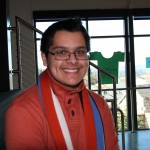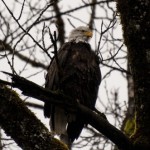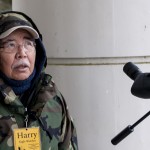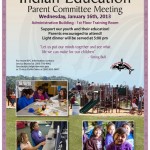“Building Bridges” is the first in a new series of monthly columns to appear in the North County Outlook and written in rotation by leaders of the City of Marysville, Tulalip Tribes and Marysville School District. The purpose of these columns is to highlight various facets of successful partnerships that have become a hallmark of relations between our governments and respective communities, for the mutual benefit of all. Our sincere thanks to the North County Outlook and Editor Beckye Randall for graciously agreeing to provide us with this great platform for sharing our stories with the public.
A growing community such as Marysville that looks to pride itself on being a welcoming, more prosperous and livable city, is one that learns to celebrate our differences and leverage them to become our strengths.
I established the City of Marysville Diversity Advisory Committee, now into its third year, to build on that ideal. The Committee advises me on policy matters involving the community’s cultural and ethnic differences, and prioritizes issues concerning diversity and inclusion to ensure that the diverse character of our city is represented in decision-making processes.
Marysville has a lot to gain by becoming a more diverse, inclusive community that values diversity. In our community and business partnerships, and outreach with citizens, we recognize that diversity is an asset essential for innovation. It is more than just the right thing to do; diversity will enrich our community.
Both Tulalip Tribes and Marysville School District have been key partners in this endeavor, and they have provided their wisdom, key staff members and resources to the Committee since day one. In addition to the Tribes and District, the Committee is composed of community leaders from various ethnic populations, advocates for people with physical or mental differences, the business community, churches and location organization. I am indebted to the Committee for its tireless work and to the excellent support that is receives.
Bringing these diverse voices to the table is helping to ensure that as more people from ethnic populations and people with disabilities become active in positions of community leadership at levels more reflective of our broader population, the greater community will view these diverse populations as respected, valued members of the community. Committee Chair Marvetta Toler was a catalyst for making this Committee a reality, and her leadership has been indispensible, culminating in her nomination as first recipient of my Leader in Diversity Award in 2012.
Marysville is a growingly diverse community. Two major social-economic forces have changed the face of the Marysville area for the better. The influx of sailors and families stationed at Naval Station Everett have added a diverse character to the community, and the economic revival of the Tulalip Tribes and strong partnership the City and the Tribes have forged has laid a foundation for prosperity for both communities
Additionally, we have seen increases in our Hispanic, African-American and Russian/Ukraine communities, as evidenced in 2010 Census data. For illustrative purposes, consider that Marysville’s Hispanic and Latino population increased rapidly from 1,222 in 2000 to 6,178 in 2010 or as a percentage, from 4:8% of Marysville population in 2000 to 10.3% in 2010.
All too often, building an inclusive community does not emerge as a priority until a negative incident or series of problems erupts that require response from the City, resulting in time spent undoing damage and building community. That wasn’t the case in Marysville. We took a proactive approach, confident that a handful of key community leaders would step up and work together to bring the rest of the community along.
Committee members spent a year developing a vision and mission, and zeroing in on areas where they believed diversity actions could have the most impact. Beyond government and education, they chose business/workforce, outreach and engagement, arts and culture, partnerships with community stakeholders, law and justice, and children and families.
The Committee’s activities culminated in January 2012 with a Diversity Two-Year Work Plan. This thought-provoking document serves as a set of priorities, goals and recommendations designed to educate, enrich, promote, strengthen and enhance the social fabric of Marysville, and keep the inclusiveness dialogue going. Here are a few of their achievements, and projects in the works:
- Added a prominently displayed translation tool on our city website.
- Developed brochures about the Diversity Committee’s work in English, Spanish and Russian/Ukraine.
- Delivering 20-minute community outreach diversity presentations to various groups, and seeking out other groups to present the message.
- Participating in roundtable Race Conversations through the School District Superintendant’s diversity work via the W.K. Kellogg Foundation.
- City airing blocks of daily Native American programming provided by the Tulalip Tribes and shown regularly on our community cable access channels.
- Working with Leadership Snohomish County to produce a diversity video.
- Exploring the concept for a multicultural fair to be held in September in Comeford Park, and working jointly with the Marysville Arts Coalition to develop a Diversity Arts Contest tied into the fair.
Our vision is that Marysville will be a welcoming and inclusive community that recognizes and honors diversity and is free from prejudice, harassment, bigotry and hate; strives to achieve equality of opportunities for all residents, and creates a harmonious environment.
The City of Marysville, working with Tribes, School District and other key partners, is committed to being a community that takes pride in our ethnic diversity, creates an environment where differences are valued, and builds on the sense of belonging and quality of life we have come to share.













